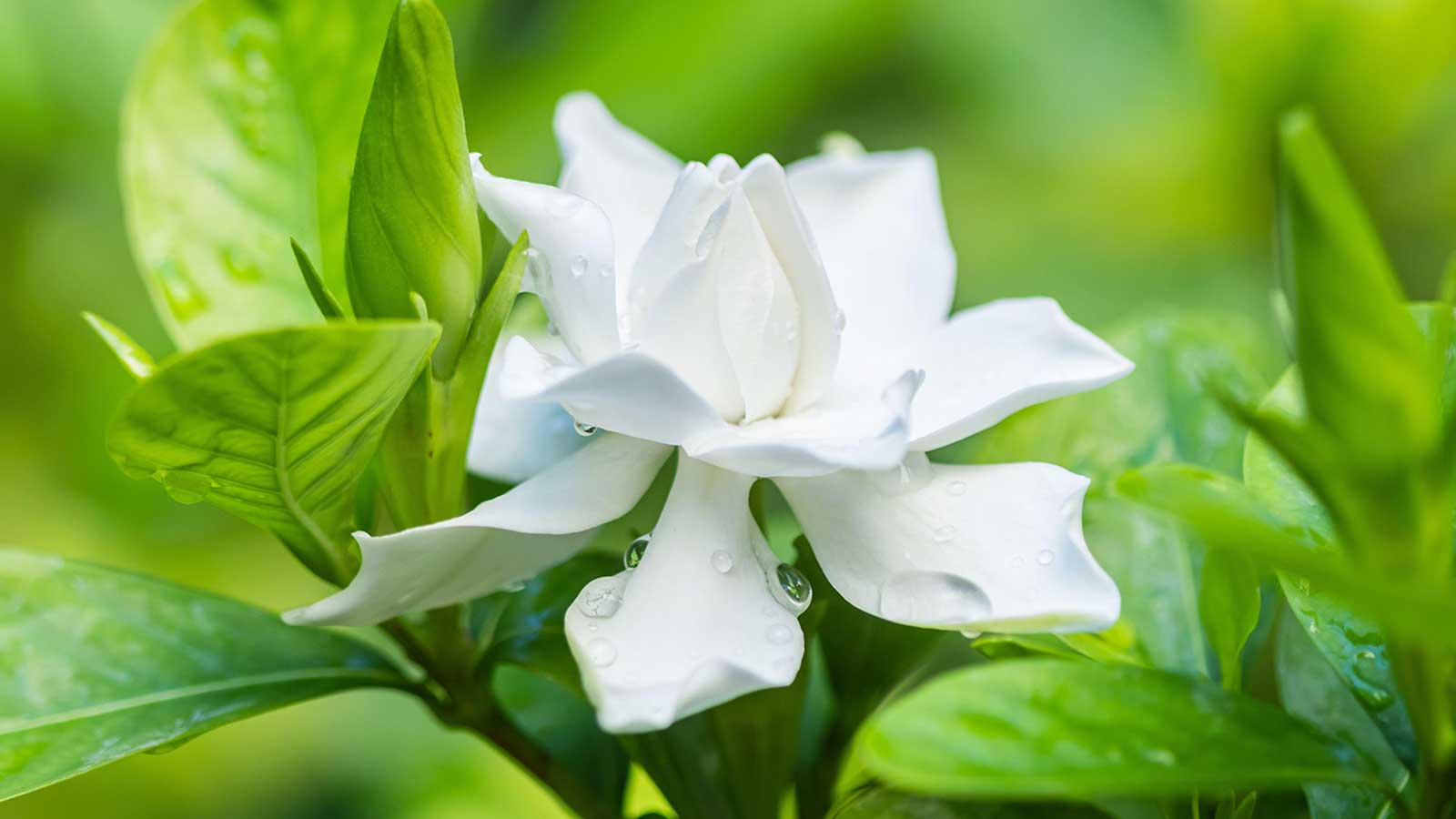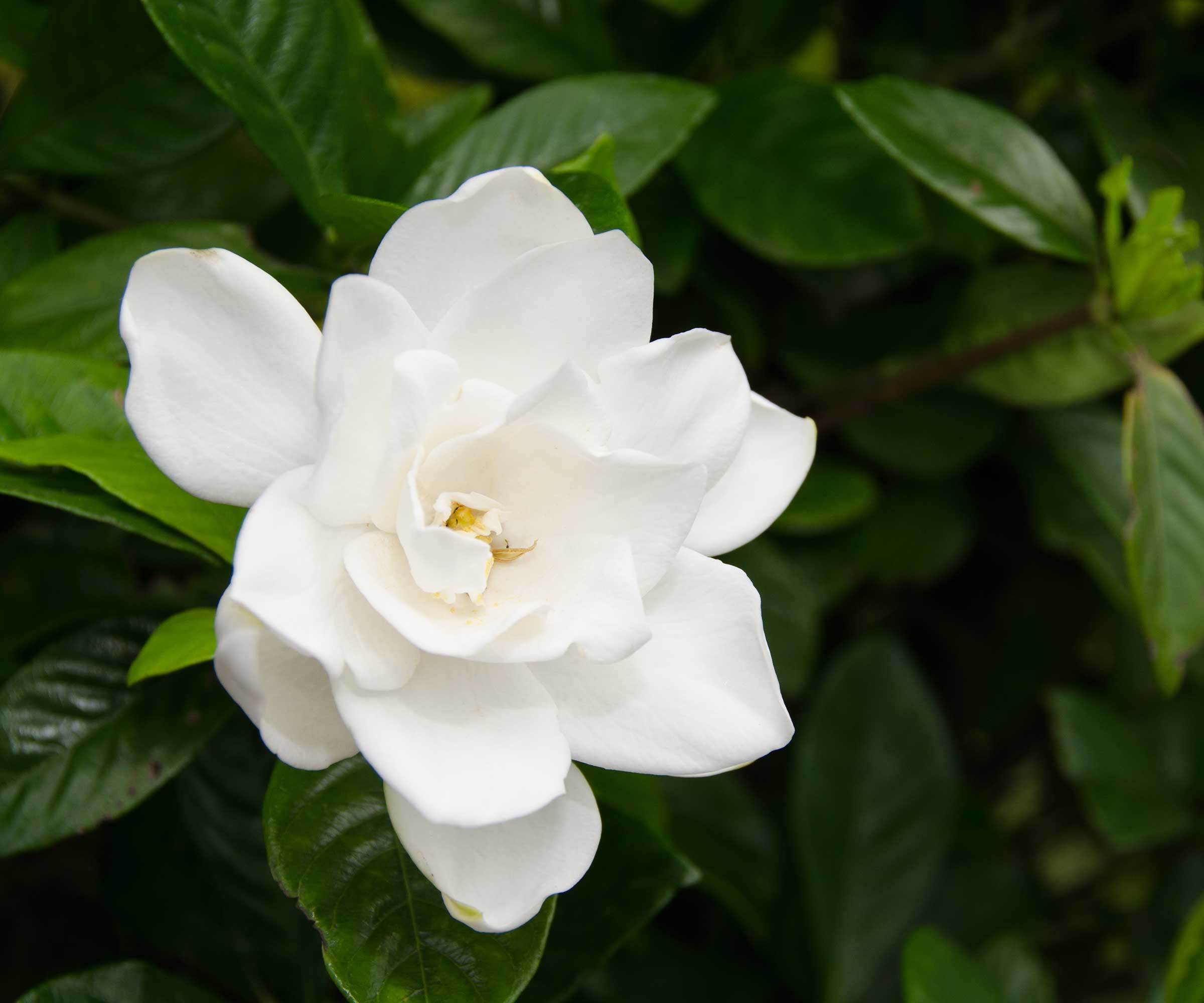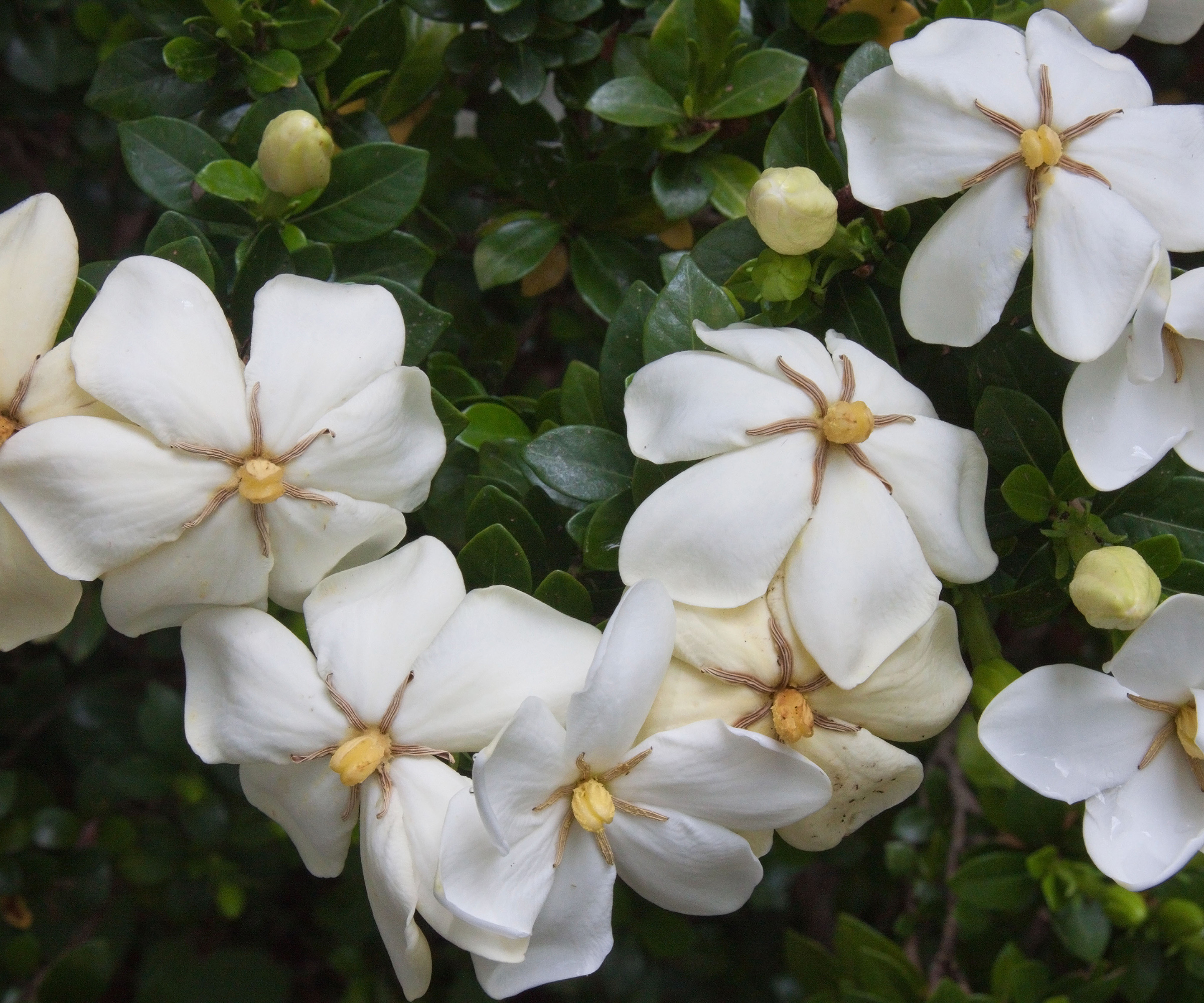How to grow gardenia – a prolific bloomer with an intense summer fragrance
Gardenias are loved for their unrelenting flowering potential and their delicious summer scent


Gardenia, or Gardenia jasminoides, is an evergreen shrub native to tropical and subtropical regions. It is beloved by many for its saucer-shaped white flowers that appear in summer and fall, which have the most heavenly fragrance, known for packing a paradisical punch, and carrying through the air on warm summer days.
To many, gardenia is a familiar and nostalgic sight and scent, since in many areas of the world, particularly in warmer climates, gardenia is a staple fragrant flower to incorporate in a garden scheme. To some, learning how to grow gardenia may feel like stepping into the unknown. If you are new to gardenia or wondering how to grow gardenia like a pro, there are expert tips to take heed of before getting stuck in.
If you're on the hunt for one of the best fragrant shrubs to add to your garden scheme, gardenia should be at the very top of your list. Here, one garden expert provides all the information you need to know on growing a happy, healthy, and beautifully scented gardenia plant.

An expert guide to growing gardenia
The perfume from a gardenia plant is quite unlike anything else. So delicious and intense is the fresh solar scent of its flowers, it can be smelled from very far away. Unsurprisingly, the scent is distinctly floral and feminine, but it has the clarity of lime and mint, with an undertone of coconut.
Close your eyes, and it's easy for this plant to transport you to palm-fringed beaches. Despite its sweet disposition, though, gardenia can be a tricky plant to manage if you aren't equipped with the right knowledge.
'Gardenias are beloved for their glossy green leaves and fragrant white blooms, but they do have a reputation for being a bit high-maintenance,' explains Robin Phelps, gardening and preserving coach and founder, Sow Many Plants. 'With the right conditions and care, though, they can thrive and become a standout feature in your garden or home.'
Growing habits of gardenia

'Gardenias prefer a spot that mimics their native subtropical environment: warm, humid, and slightly shaded,' explains Robin. In the US, gardenias do best in USDA plant hardiness zones 8-11.
Design expertise in your inbox – from inspiring decorating ideas and beautiful celebrity homes to practical gardening advice and shopping round-ups.
In the UK, where winters can be harsh, it is more common to see gardenia as a houseplant, but rest assured, it can be planted outside, but always above 16°C (60°F).
If you are worried that your area may be too cold for gardenia, some varieties are more cold-hardy, like this frost-proof gardenia available from Nature Hills, which is much more tolerant and far less temperamental than traditional gardenias.
If you are blessed with warmer days and nights, the 'August Beauty' gardenia available from Perfect Plants, would be my choice, as it has beautiful glossy, dark evergreen foliage and 3-inch wide flowers in summer.

Robin Phelps is a Gardening and Preserving Coach, with a passion for nurturing green spaces and preserving the bounties of nature. With over 20 years of experience in gardening, Robin began her journey in a small apartment with a balcony and has since expanded to growing on 3 acres. She has evolved into an expert gardener and is eager to guide others on their gardening journey.
Care guide for Gardenia

- Soil: 'Use acidic, well-draining soil,' advises Robin. 'Gardenias dislike alkaline or heavy clay soils. Amend with compost, peat moss, or soil acidifiers if necessary. If you are potting your gardenia, be sure to use acidic potting mix (look for those formulated for azaleas or camellias). 'Watch the pH' warns Robin. 'Gardenias prefer a soil pH between 5.0 and 6.0. If leaves turn yellow (especially with green veins), it could be a sign of iron chlorosis caused by too high a pH.'
- Light: If you are assessing where to place a gardenia in your yard, Robin suggests placing it somewhere with 'morning sun and afternoon shade – especially in hotter climates. Too much direct sun can scorch the leaves, while too much shade can limit blooming.'
- Watering: 'Don’t overwater,' says Robin. 'Keep the soil consistently moist, but not soggy. Let the top inch of soil dry out slightly between waterings.' Avoid planting gardenia in areas with poor drainage or standing water, which can cause root rot. If you are potting your gardenia, Robin advises that you 'choose a pot with good drainage as soggy roots are a common issue.'
- Fertilizing: 'Feed regularly,' advises Robin. 'Use a fertilizer designed for acid-loving plants during the growing season (spring through summer). If you're looking for a great fertilizer that would work, try this acid loving water soluble plant food from Nature Hills.
- Pruning: If you're wondering when to prune gardenias, it is best to prune them as soon as they have finished blooming. 'Lightly trim to shape the plant and remove spent flowers. Avoid heavy pruning in fall or winter, as it can reduce blooming the next season.' Robin notes.
- Where to plant: A sheltered spot would be the most suitable for a gardenia plant. Where you can, try to avoid extremely windy areas, as wind can damage buds and leaves. Robin suggests giving them a home where they can be left in peace. 'Avoid planting them in high-traffic spots, gardenias are sensitive to disturbance and don’t like being brushed against or moved frequently,' she explains.
FAQs
Can gardenias be grown from seed?
'While it's possible to grow gardenias from seed, it’s not the most practical method for most gardeners.' explains Robin. 'Seed-grown plants can take several years to mature and may not be true to the parent plant. Most people grow gardenias from cuttings or purchase young nursery plants for faster, more reliable results.'
Can gardenias be grown in pots?
Yes, gardenias grow beautifully in containers, which is a great option for gardeners with challenging soil or colder climates. Growing them in pots allows better control over soil conditions, moisture, and exposure. Gardenias are one of the best container plants for privacy, as they can grow up to a staggering 6 feet tall and 4 feet wide, and provide year-round privacy.
Where to place gardenia indoors?
If you are wondering how to care for a gardenia indoors, humidity is of vital concern. 'Gardenias love humidity,' explains Robin. 'If indoors, place the pot on a humidity tray or use a humidifier to prevent leaf drop. Keep the plant in a spot with bright, indirect light or partial sun,' she advises.
These tender shrubs may need a little more tender loving care than other fragrant flowers, but if you can get the conditions just right, they are one of the very best evergreen shrubs to deliver a magical sensory garden experience.
Many plants will deliver summer scent, particularly rambling fragrant roses, aromatic herbs, honeysuckle, and, of course, the heavenly scent of in-bloom jasmine is pretty hard to beat. But if you are looking to diversify your fragrant blooms, consider gardenia.
Despite its sometimes tricky temperament, when you know how to grow gardenia by following these simple rules, it will bring you a flower-filled, heavily scented summer and fall, thronging with insects and wildlife.

Sophia Pouget de St Victor is the UK Content Editor at Homes & Gardens, bringing readers the latest trends, expert insights, and timeless design inspiration tailored to a UK audience. With a background in luxury interiors and a qualification in Garden Design from London, she has a passion for creating spaces with character and emotional depth. Sophia gravitates toward interiors that defy definition, valuing individuality and effortless elegance. She lives in West London with her partner, two mischievous terriers, and a plump cat named Lettuce.